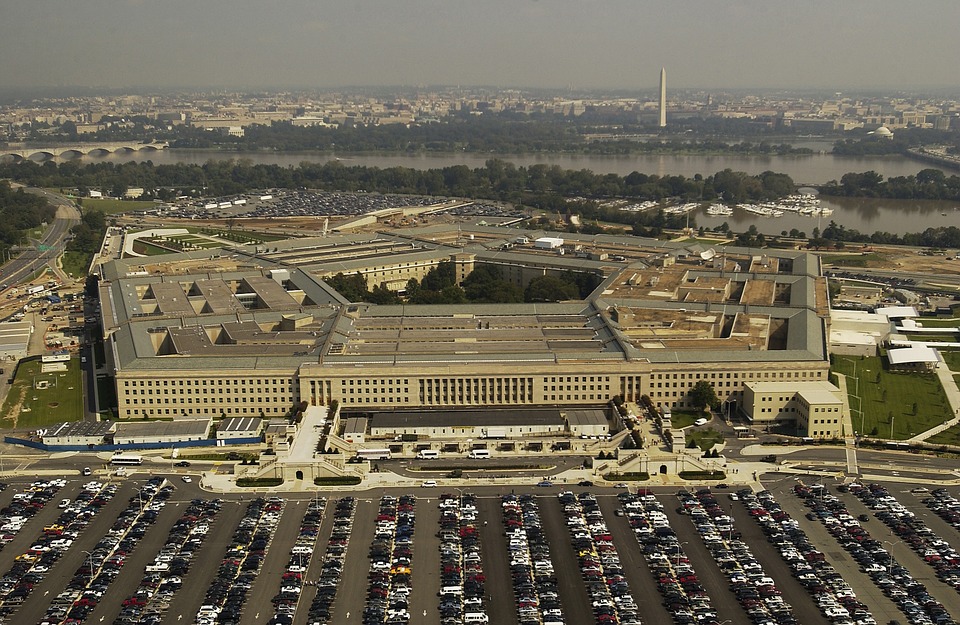
China and Russia are surpassing the United States in acquiring a technology the Pentagon has tried and failed to develop for years: a maneuverable missile that could fly many times the speed of sound and strike anywhere in the world within an hour or two, senior military officials say.
The prospect of losing this arms race has quietly made the development of the hypersonic missile a top priority at the Pentagon, the officials said, as the United States faces rising challenges from superpowers around the world.
In speeches and Capitol Hill hearings, Michael Griffin, the newly installed undersecretary for research and engineering, bluntly called on the defense establishment, and its contractors, to move much more quickly, or give its adversaries a huge military advantage.
Both Russia and China have rigorous development programs that "are observably ahead of where our current state of practice is," Griffin said earlier this year. "We're playing catch-up ball."
"The United States is not yet doing all that we need to do to respond to hypersonic missile threats," he said in a recent speech. "I did not take this job to reach parity with adversaries. I want to make them worry about catching up with us again."
The Air Force recently announced it was awarding a contract of almost $1 billion to Lockheed Martin to design and build a hypersonic vehicle. Boeing has announced it was investing in a British company that makes advanced propulsion systems that could power a hypersonic vehicle.
Like conventional missiles, hypersonics move very fast, at least five times the speed of sound, or 1 to 5 miles per second. Because they move so quickly, hypersonic missiles can stay relatively low, avoiding detection. Unlike ballistic missiles, which follow a fixed and therefore predictable trajectory, hypersonic missiles can maneuver, making them difficult to defend against.
"They're lower, and they can maneuver, so it's a different kind of threat," said Todd Harrison, a defense analyst at the Center for Strategic and International Studies.
The Pentagon has been pursuing the technology for more than a decade. As U.S. forces hunted Osama bin Laden after the 9/11 attacks, military officials decided they needed a weapon that could strike quickly if, say, they received word on his whereabouts, or if intelligence showed that a rogue nation was about to launch a missile attack.
The Defense Advanced Research Projects Agency, the Pentagon's research arm, created a program known as Falcon with the goal of developing a hypersonic weapon that would fly into space and be able to carry 1,000 pounds of munitions. But after the test vehicle failed during trials in 2010 and 2011, Pentagon officials largely gave up on the program as Congress pulled funding.
Now, Pentagon officials say they regret not pushing ahead.
"We had a couple of failures, so we kind of stopped and regrouped to look at the overall structure, to make sure we understood the technology - what was working, what was not working," Air Force Gen. John Hyten, the commander of the U.S. Strategic Command, told reporters recently. "From my perspective, I'd have liked to have just learned from that mistake and keep going. Don't stop."
William LaPlante, a senior vice president of Mitre Corp. who served as the Air Force's top procurement official, said part of the problem is that the military had grown too lax.
"It's easy to get technically arrogant and just assume that we're better than everybody," he said in an interview. "They have very good engineers in Russia and China."
Those countries apparently have been pursuing hypersonics for years, pressing on to the point that they are further along in their programs. In a speech shortly before his election, Russian President Vladimir Putin boasted that the country had developed a high-speed nuclear-tipped missile weapon that could wend its way from the Russian Arctic, crossing the Atlantic, then rounding the southern tip of South America as it headed toward the United States.
Hyten told reporters that the Pentagon was well aware of Russia's capabilities. "We watch them very closely," he said. "We also listen to what they say very closely. And none of what he said surprised me."
The Pentagon says it is taking the threats seriously and moving with a sense of urgency to not just acquire a hypersonic missile but also build the defenses to guard against them as well.
DARPA continues to develop a hypersonic engine, a hypersonic cruise missile and a glide vehicle that would launch atop a rocket and then fly at hypersonic speeds to its target.
But the agency won't discuss the programs in depth because "the details of current research and development efforts are classified," a spokesman said.
While those programs are focused on catching up with adversaries, some say the United States should be doing more to create more robust defense systems.
"The real race is here if our adversaries develop and deploy hypersonic missiles before we have effective defenses against them," said Harrison, the defense analyst.
The Missile Defense Agency declined to comment for this story. But in congressional testimony, Lt. Gen. Samuel Greaves, the agency's director, told Congress this year that combating hypersonic weapons is a "top priority" that starts with creating better sensors to detect the fast-moving missiles. He also said he worried that if China and Russia do master the technology, it could proliferate into other "rogue" nations such as North Korea and Iran.
Also speaking before Congress, Griffin said this year that the gap between the United States and Russia and China was real and troubling.
"We, today, do not have systems which can hold them at risk in a corresponding manner, and we don't have defenses against those systems," he said. "Should they choose to employ them, we would be today at a disadvantage. It is among my very highest priorities to erase that disadvantage, creating our own systems to hold them at risk and to provide defense."


 Contact The Editor
Contact The Editor
 Articles By This Author
Articles By This Author